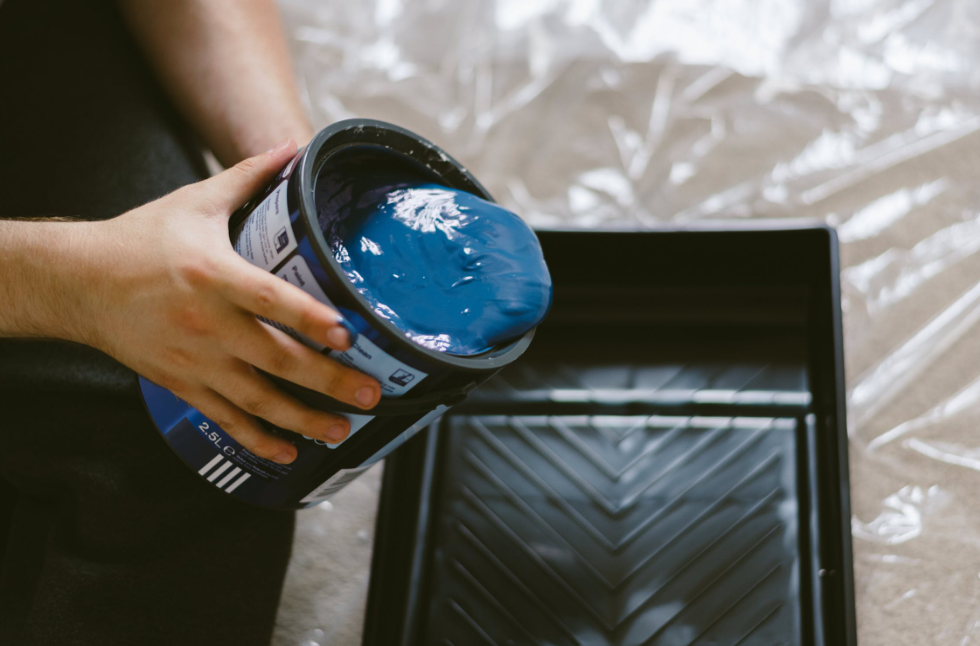What Are Low Odor and Low VOC Paints?

It’s only natural for someone not to be able to differentiate between an odorless and a low VOC paint. If you are into painting, you’ve probably bumped into both terms. However, since you’ve never taken a keen interest as to what constitutes the paint; you don’t have the slightest of ideas of what we are talking about right now. Various paint types usually get advertised by manufacturers in between TV programs, but let’s all be honest with each other for a second – who concentrates on commercials? It might come as a surprise to you to learn that several homeowners always go for the right product because they make it their business to understand what’s suitable for their properties. Subsequently, when they go out to purchase paint for an interior or exterior project, they specifically ask for either an odorless or a low VOC paint. So, how can an individual looking to buy paint, distinguish these two products?
What are VOC paints?
First off, you ought to know this is an acronym that stands for Volatile Organic Compound. It’s a term used for all those compounds that have carbon in their molecules. According to scientists, such compounds have the capabilities of releasing many particles to the air. In the process, they end up evaporating and thus, polluting the air around.
But why are they added in paints?
Producers have depended on VOCs for years. It’s in the paint due to a couple of reasons. For one, it functions as a fungicide and prevents mildew. And as a result, the product’s self-life gets extended. Some of the common VOCs in the market include the benzene, formaldehyde, glycol, and ethylene. Without a doubt, you can make an office place or a home, inhabitable if you decide to use VOC paint during your project. We’ve heard of people reporting side effects such as headaches, dizziness, watery eyes, and even asthma flare-ups. Although currently there’s no substantial evidence of any long-term consequences, the United States Environmental Protection Agency has categorized them as potentially cancer-causing. During production, as a manufacturer, you are to use 250 grams per liter for the latex paints, and an additional 130 grams on a liter for oil-based. Notably, many firms cap their paint’s VOCs at extremely shallow levels. For instance, California has the most moderate cap which is 50 grams per liter.
Not so long ago, players in the market realized that odorless paints were not as productive as their high VOCs peers. It’s this fact that compelled companies such as Sherwin Williams, Benjamin Moore, and Glidden to invest heavily in research projects. They aim to improve this paint’s performance because most consumers prefer them.
No VOC or Odorless Paints
Word on the street is that these paints are just as efficient as those with VOCs but you ought to know there are some noticeable differences.
These include:
A. Lack Fungicides
A short while ago we mentioned the function of fungicides in VOC paints. Interestingly, odorless paints lack this element in them, and for this reason, they can easily get contaminated by micro-bacteria. Logic, therefore, requires you not to put the painting tools in the paint can directly. You’ll see professionals use different containers during projects, and seal the original can as soon as possible. Later on, the tin gets stored in a cool, dry place.
B. The Cleaning Process
As opposed to those painted with VOC paints, walls that have odorless paint should not get cleaned with the help of ammonia-based cleaning products. In addition to this, for approximately four weeks, you should not wipe such a wall after the initial paint application. Instead, experts have on many occasions recommended mild soap and water if you feel like the walls are too stained.
C. Low-Quality Rating
Undoubtedly, odorless paints have a weak quality score in comparison to VOCs. Consequently, you’ll have to apply more coats of paint to achieve the desired results. In most cases, two layers usually do the job.
Always ensure you take the necessary precautions while handling any paint. Remember, prevention is indeed better than cure. After you are done working, the first thing you should do is to use soap and warm water to rinse all the brushes and rollers. Focus on the bristles and remove any paint left after cleaning it. Secondly, as you work on your walls open all windows, and even the doors to make sure the room has a free air circulation. If this isn’t possible, take short breaks to go outside to inhale fresh air for a few minutes. Lastly, mind the environment while throwing away unused paint.
